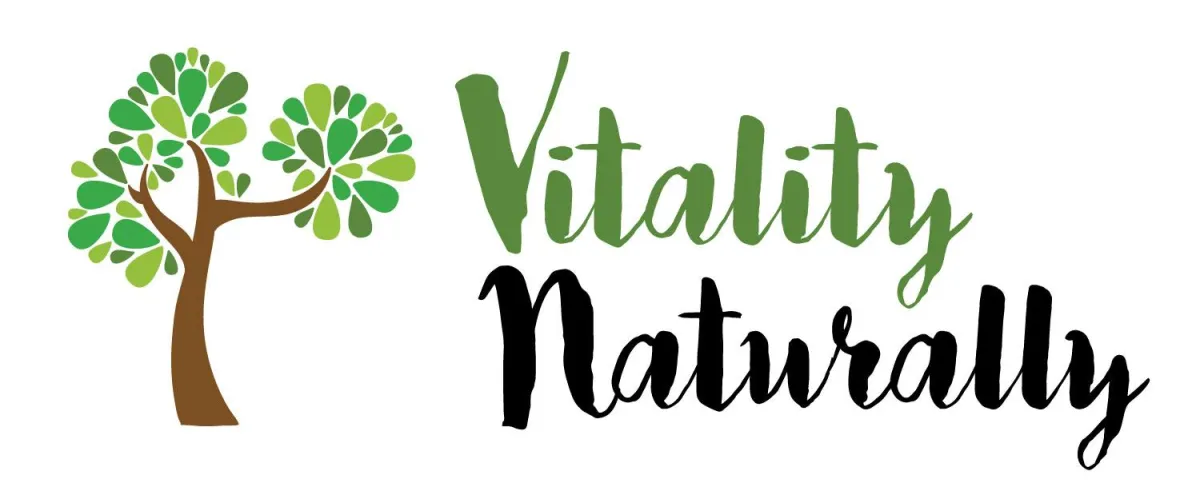Blog
Words of wisdom to inspire you...
Blog
Words of wisdom to inspire you...

Turning your burnout into breakthrough
“The first step is to surrender and allow yourself to be exactly where you are. Resistance, pushing and trying to carry on only perpetuate the situation.” - Carli Thorpe
Can burning out be your breakthrough?
Can experiencing a burnout be an opportunity for a breakthrough in your life? In my personal experience, the answer to this question is a full body “YES”.
Burnout is a term we are hearing more frequently. I believe there are two reasons why. Firstly, it is becoming more recognised and accepted. Secondly, more people are experiencing burnout as they navigate the ever-increasing pressures of life.
According to the Business Health Institute in a 2022 article, two-thirds of full-time employees say they have experienced burnout in their careers. In the online digital platform ‘picked’ a 2023 article shows:
46% of UK workers are close to burnout.
Reports of burnout have increased by 48%.
13.7million work days are lost in the UK due to work-related stress, anxiety and depression.
Although these statistic focus on work-place related burnout, it isn’t exclusive to the workplace. Social and home life can also be contributing factors – something I experienced first-hand. The reasons for this will become clear and could help you understand your experience of burnout.
What is burnout and why does it happen?
Simply put, burnout is a state of physical and emotional exhaustion.
According to Mental Health UK, common symptoms of burnout include:
Feeling tired or drained most of the time
Feeling helpless, trapped and/or defeated
Feeling detached and alone in the world
Having a negative or cynical outlook
Self-doubt
Procrastination and taking longer to get things done
Feeling overwhelmed
My opinion? This description only scratches the surface.
I would describe burnout as “an all-encompassing exhaustion enveloping mind, body and spirit, where no amount of sleep or rest can replenish energy and vitality”.
A heavy fog seemed to cloud my ability to think clearly. What used to be simple tasks felt like mountains. I couldn’t comprehend simple instructions and I experienced significant emotional distress. I began to question the meaning of my life and my work. I felt isolated and lost. I developed a hyper-sensitivity to sound and people. What previously bought joy, no longer did. There was a voice deep inside that was saying “this isn’t the life for you”. Does it ring any bells for you?
Even though I felt isolated, I craved solitude because I couldn’t cope with any further demands being placed upon me. I was at capacity. I eventually discovered that a lot of what I was feeling was internally generated. This was an empowering and life changing realisation.
In hindsight, my body had been whispering to me for months, but I ignored the signs and pushed through. The long, slow decline eventually led to the day I could no longer function. Feeling broken beyond words and deeply frightened, my only option was to surrender. Therein was the first step to turning burnout into breakthrough.
Burnout is a scale ranging from mild to severe. If you notice the signs early enough and respond to the messages your body is sending, you can prevent a full blown burnout. In any case, it can be a source of transformation. You can fully recover and prevent repeating burnouts with the correct approach - no matter where you are on the scale.
Christina Maslach and Michael P. Leiter have carried out extensive work in this area. They identified a number of factors that pre-dispose someone to burnout. Their research is specific to the workplace, but these factors can also be applied to family and social environments.
Mismatch. The root of burnout.
At the root, is a mismatch between the person and their situation. A long-term sustained mismatch is chronic stress for mind, body and spirit. If we start to dig into each of the factors, it is possible to see that limiting beliefs, fear, disempowerment and low self-worth could be perpetuating the mismatch. These are the factors:
Work overload - having too much, unrealistic deadlines or work that is too complex
Insufficient reward – where money, satisfaction, recognition or reward is lacking
Lack of control - not having a say or control over the things that affect you
Values conflict - where there is a mismatch between core values and workplace/family/social environment
Unfairness – where you are treated unfairly or perceive that you are
Loss of community – working in isolation or in an environment where you feel unsupported; where you work in a toxic culture.
Two additional factors identified by Evelyn Levenson in her book “Becoming an Empowered Projector” are also included here:
Possible lack of consistent and predictable energy.
Emotional pain – such as feeling rejected; unseen; unrecognised; ignored; unworthy; judged; bitter; resentful.
A brief digression is needed here: What is a “Projector”? This is a term used in Human Design to describe one of the five ‘types’ of energy configuration. We all have an energy configuration but delving into this is outside the scope of this article. Depending on your energetic makeup, you could be a type that has inconsistent energy and you may need to manage your energy differently to that of other types.
An alternative perspective
We’ve identified what burnout is, symptoms of it and factors that could pre-dispose someone to it. I also want to share another perspective. When working with clients, I apply the Lifestyle Prescriptions and META Health approach. This is a bio-psycho-social model of illness and disease. In this model, an illness could occur as a result of a significant emotional event that has an impact on all levels simultaneously – mind, body, spirit, social and environment. Outcomes depend on the perception of and response to the event, which then determines the part of the brain impacted and the organs affected.
In this approach, all symptoms, illness and disease are meaningful responses from the body. In becoming aware of the conflict and emotions, and by applying tools and techniques to transform them, we can facilitate a holistic healing journey. (Please note, this is not a diagnostic tool and does not replace medical intervention.)
Let’s look at burnout specifically and how this might apply.
In the case of burnout, the adrenal glands are affected. Chronic high levels of stress hormones have been coursing through the body for a sustained period of time before burnout symptoms appear. It would make sense then, when symptoms do start to appear, such as exhaustion, confusion and brain-fog, that these are signals from a body that needs to slow down.
As I was descending into burnout, I was repeatedly asking the question “what is wrong with me?” But a more appropriate question to ask is “what needs changing in my life?” Not only does this move the focus away from the belief “I am broken” but it also creates the potential for change. A more empowered approach don’t you think?
Exploring emotional conflict:
If I was exploring the emotional conflict that caused burnout for a client, I would be guiding the exploration of questions such as:
Where, on your list of priorities, are you and your health?
Where are you saying ‘yes’ to others when you mean ‘no’? Is this resulting in you being over-scheduled and over-committed?
Would you consider yourself to be a ‘people pleaser’? From here this would spark an exploration of how (and if) you set healthy boundaries and where your self-worth might be linked to the external approval of others.
Do you, or have you spent a significant amount of time being on high alert or feeling like you need to be on guard?
What are your core values and which elements of your life are aligned / misaligned with these?
Which aspects of your life feel overwhelming and why?
Are there times where you feel you have missed important opportunities and how do you feel about that?
Are there areas of your life where you feel disempowered or controlled? Is this something that featured in your past?
Are there any aspects of life that you need to get away from, or that you feel are going in the wrong direction?
Are you afraid to show up authentically as yourself? What do you believe will happen if you do?
Answering these questions can give empowering insights about why you are burning out. In identifying the root cause, it plants the potential for change – but don’t worry, you don’t need to do it all at once.
How do you overcome burnout and prevent it from happening again?
It is paramount that you recognise burning out is not something to feel guilty about or to feel ashamed of. I invite you to try a perspective shift and look at this with a curious, compassionate mind and heart.
If symptoms, illness and disease are meaningful responses from your body, what is it trying to tell you? The answers to the questions above could be very revealing for you. Discovering what got you into burnout is essential to full recovery.
As with my own burnout, the answers to all of the above questions were significant. The ultimate underlying cause was an inability to be my authentic self. I was presenting a fabricated (and “perfect”) version of myself in work, marriage and in my social life. I thought I needed to do and be everything to everyone. It became exhausting and unsustainable. There was a deep fear of rejection, emotional wounds from the past, and a raft of limiting beliefs hidden in my sub-conscious.
Once I started to transform everything that I was holding inside (with the correct help, support, tools and techniques), life started to change. As I started to feel better, I had the clarity and energy to make life changes so that I was living authentically. The shifts were so profound that I re-trained to help others recover from burnout.
Start your recovery now:
The first step is to surrender and allow yourself to be exactly where you are. Resistance, pushing and trying to carry on only perpetuate the situation. With surrender comes a re-defining of your priorities. Recovery and your wellbeing become your highest priority.
Cultivate a self-care routine that supports your new highest priority. I recommend lots of intentional rest, time in nature, switching off from devices periodically, saying no, moving and breathing mindfully, doing things that you enjoy and bring you peace – no matter how small they may seem. This will facilitate you being able to manage your energy more wisely. You will hear the signals from your body more easily and learn to respond to them.
To support your body, avoid excess sugar consumption, recreational substances and stimulants such as alcohol, caffeine and nicotine where possible. If you are highly addicted you may need additional support to manage this. Instead, eat plenty of fresh vegetables, fruits, healthy fats and organic meat, fish and poultry – focus on buying foods that don’t have a list of unpronounceable ingredients. Drink plenty of filtered water.
Ask for help. I tried for too long to process what was happening internally, hoping no one would notice. The truth is this just made it worse. A specialist practitioner can guide you through recovery in a way that is sustainable, methodical and manageable – equipping you with the tools, techniques and knowledge to reclaim your vitality, joy and vibrant health.
Spend some time noticing what stories you are telling yourself that could be keeping you stuck. What is the inner narrative and can you begin to change it? As you surrender and begin your recovery journey, try out different positive statements such as, “I am building resilience and restoring my vitality”, or “I am cultivating healthy habits because I am worthy of self-care”. The idea is to focus on where you are going and where you want to be. Allow yourself to believe recovery is possible.
The last thing to share here, and perhaps worthy of being in bold, capitals and surrounded in neon lights - is to release yourself from any time pressures for recovery; release yourself from the beliefs that you need to be ‘fixed’ and that you must ‘get back to normal’. The likelihood is, you will be creating a new healthier, happier, more authentic and vibrant ‘normal’ that will sustain you naturally for many years to come.
Are you looking for support?
If you would like support on your burnout recovery journey, I offer guided self-healing in a one-to-one setting online. I teach and guide you through the powerful tools and techniques that can help you leave burnout firmly in the rear view mirror.
If you’re ready to find your answers and reclaim your vitality, energy and joy, then you’re invited to get in touch to find out more.
Book your free 30-minute call with me HERE.
And, you can also sign up to my newsletter, and access free resources HERE and there's a little something for you as a thank you for letting me into your inbox.
FREE DOWNLOAD




